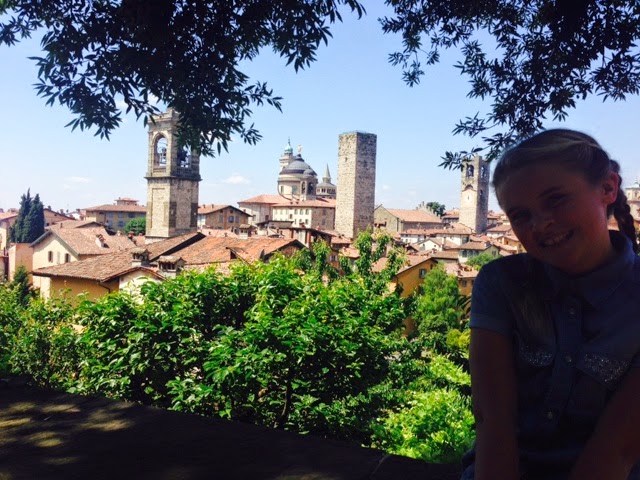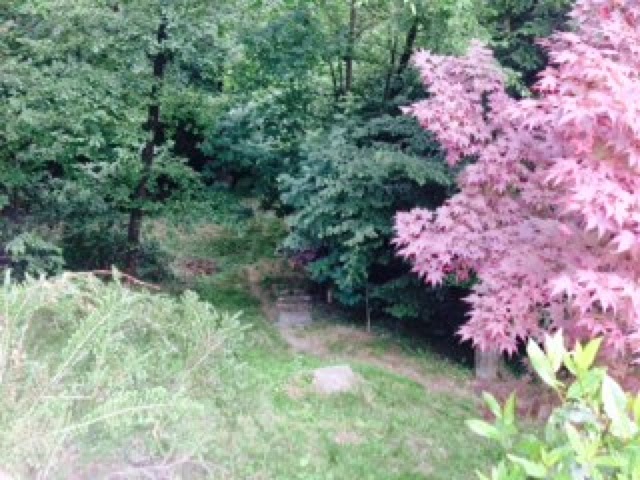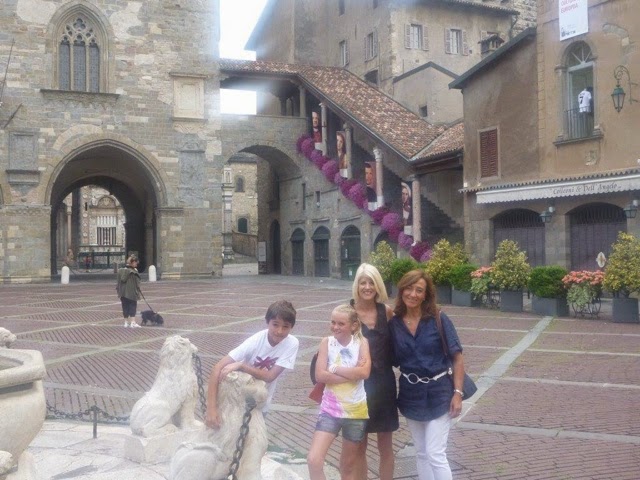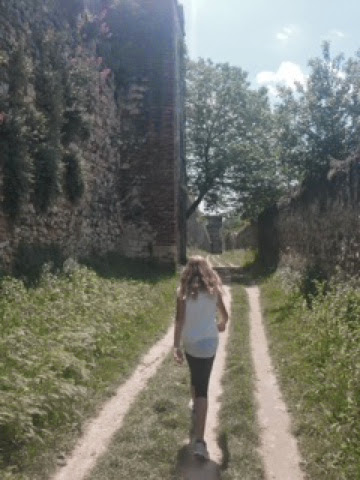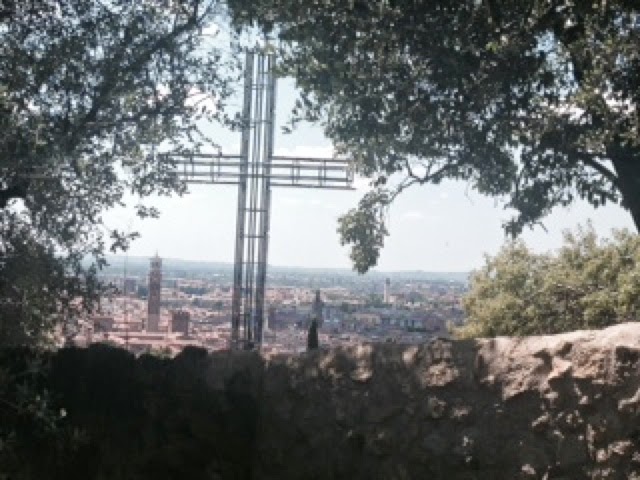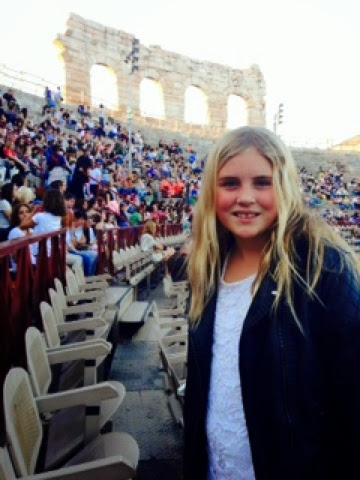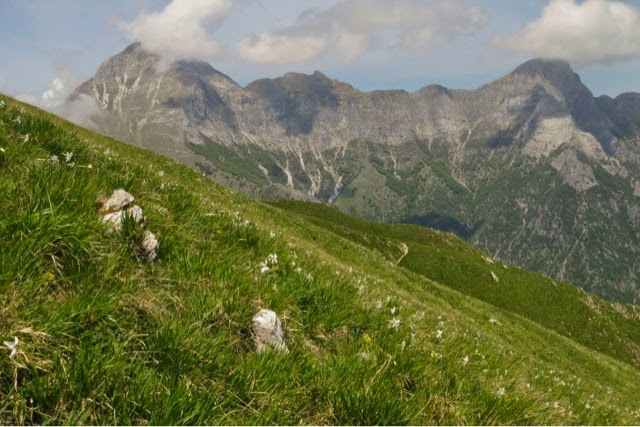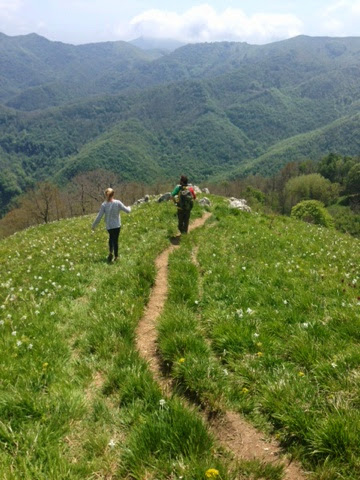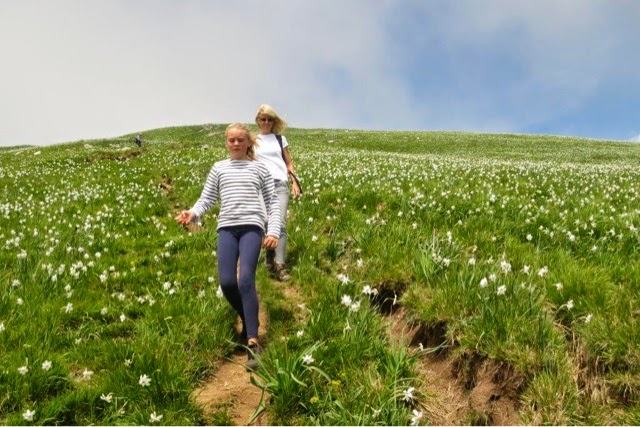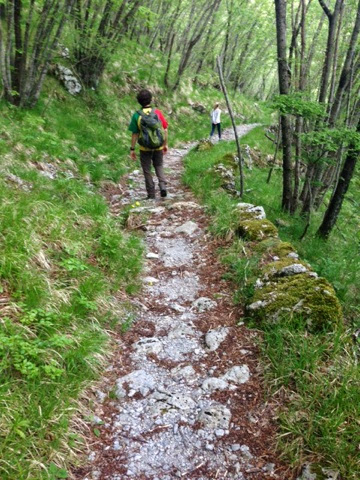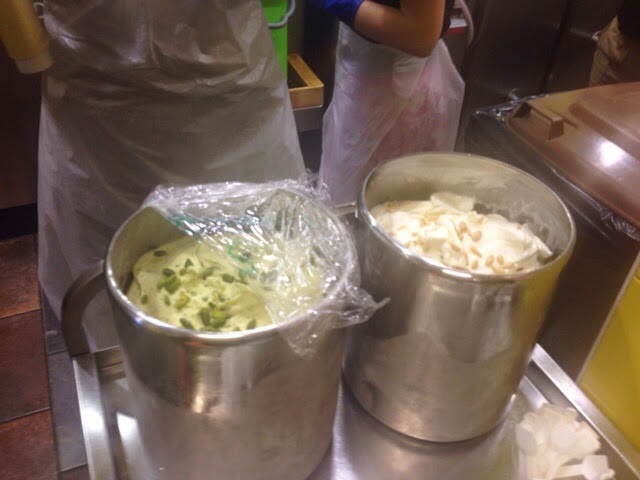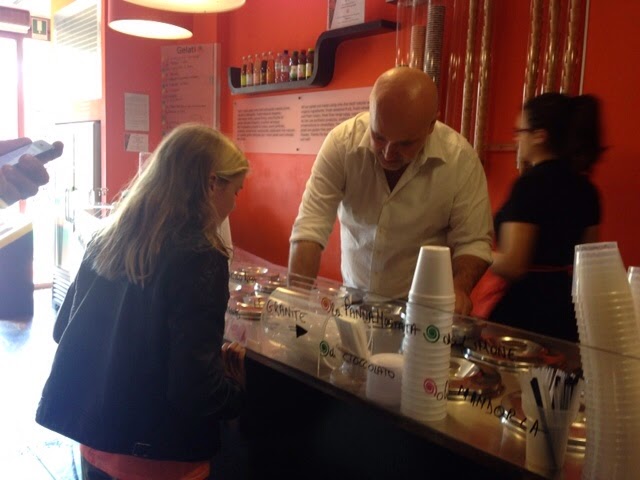Bergamo is a delight for the senses. Surrounded by "Colli Verdi" the green valleys, there are a multitude of pathways along narrow, traffic free, cobbled roads, through forest pathways and up and down the ancient stairways. The valleys provide the feeling of being within nature, amongst native bush land, olive groves, vineyards and noble villas. I enjoyed exploring the many themed pathways, most involving 1-3hour itineraries. Every day I was able to explore a new walk from the Città Alta that had me surrounded by shades of green and an historical air. One of my favourite short walks involved a steep climb up to the crest of Via S.Viglio to the Castello where the path diverts left down via Castello. I love this street. Walking downhill, the road commences as a rather narrow two-way road with a few houses along to the right. The road becomes increasingly narrow until it literally transforms into the "scalinata", ancient stairways linking parts of the Città Alta with the Città Bassa. One time I witnessed a no doubt common occasion where a car was travelling in both directions. The driver heading uphill, with nowhere to go, rolled back down and moved within a whisker of the stone wall to allow the other car to pass. Even then, the cars were a millimetre apart as I helped by motioning 'vai, vai' (go, go). This is a common occurrence in many historical towns of Italy where roads were built not with cars in mind. A good source of information for walks from the Città Alta and Bassa and in the surrounding valleys is provided by the Comune of Bergamo who suggest a range of itineraries. Some information can be found at http://www.comune.bergamo.it/
As for food, Bergamo has rich cuisine and is often referred to as the city of a thousand flavours. Some traditional dishes include 'Polenta e osei'. This medieval traditional dish consisted of polenta with cooked poultry with butter and sage. Now, in the cake store windows of Bergamo, a sweet representation of this traditional dish presents as a yellow dome-shaped cake with chocolate or marzipan birds sitting on top. The cake is coated with creamy, sugary and marzipan icing (known as pandispagna) with sponge and almond cream inside. 'Torta di Donizetti' is a cake named after the famous Bergamasc composer. It takes a few different forms but generally is a vanilla cake with dried fruits mixed through.
An amazing fact that Bergamo doesn't promote very well is that Stracciatella gelato was actually invented in Bergamo by the owner of La Marianna in Città Alta. This is where you will taste the best gelato of Bergamo using fresh natural ingredients and no preservatives or colouring. The story goes that in 1961 Enrico Panattoni of La Marianna spent an afternoon experimenting with new recipes. He mixed a creamy milk based gelato with melted fondant chocolate which formed irregular chunks when mixed into the gelato. He decided to name it after the most requested dish in his adjoining restaurant, the "Stracciatella alla Romana" which is a vegetable and meat based soup with streaks of egg. We all know Stracciatella icercream but unfortunately at the time Enrico didn't think to trademark the name so its origins are virtually unknown. I'd also recommend the flavour combination of yogurt and lemon, divine!
Casoncelli alla Bergamasca is a type of ravioli with a meat, nut, cheeses filling served with butter and sage sauce. Scarpinocc de Parr is another filled ravioli style pasta from the outskirts of Bergamo in a town called Parre. The shephard's shoe-shaped pasta is filled with cheese, breadcrumbs, herbs and spices rather than meat. Both of these pastas feature frequently in deli windows and on traditional restaurant menus. Traditional Bergamasc salamis, cheeses and wines also take pride of place in their traditional cuisine. Bread shops abound (panifcie) with very good quality breads, focaccia and fruit filled loaves. A visit to the famous pizza by the slice store in Città Alta is a must with their seasonal toppings to suit all tastes.
Although many restaurants have strictly traditional menus, an example of a restaurant that stands out as firm followers of the slow food philosophy is Da Mimmo in Città Alta. This family run restaurant labels its dishes on the menu as either traditional Bergamasc dishes, those that use DOP ingredients, dishes using products from Colli dei Bergamo (locally sourced) and those using slow food foundation registered ingredients. Examples of slow food presedia ingredients used include Stracchino cheese from the ancient valleys of the Orobiche. The term "Stracco" meant 'tired' referring to the shepherds and animals after their long travels between pastures in the valleys. Dating back to the 900s a soft cheese was hastily made from the warmed milk from tired cows. Taleggio cheeses are said to have evolved from this method of cheese production. The slow food foundation recognises and protects this ancient cheese production. Another ingredient used particularly in their wood fired pizzas are cobari or cobarini tomatoes which are grown in the Lattari mountains near Naples and are considered one of the best for making the tomato salsa for pizza. Grown in volcanic soil in traditional methods, the lack of acidity makes them perfect for a rich, sweet sauce. Other products are strictly grown in the Bergamo region, are organic and are used seasonally. This restaurant provides diners with a true taste of local products and traditional cooking.
The Slow food Foundation of Bergamo promotes a range of restaurants and food producers in the Città Alta, Città Bassa and surrounding valleys. Visit this website for the updated list:
http://www.slowfoodbergamo.it/category/ristoranti/
Elena Arezio lives in the hills of Bergamo and is a qualified interpreter and Italian language teacher for English speaking travellers. She offers amazing packages for visitors to experience an authentic Italian way of life while learning the Italian language. Her packages include accommodation (bed and breakfast style), structured Italian courses, historical and cultural tours of Bergamo, shopping excursions, day tours to surrounding towns and cities like Milan, Brescia, Verona, Mantova, Lake Como and Lake Iseo. She is able to tailor make a package suitable to individual needs while also providing the experience of living like a local in her home. Her contact details are: elena.arezio@gmail.com


